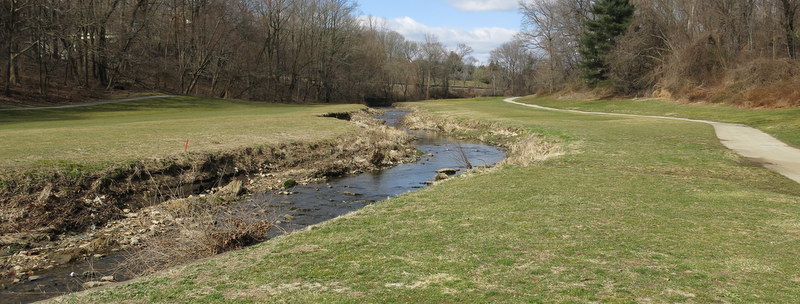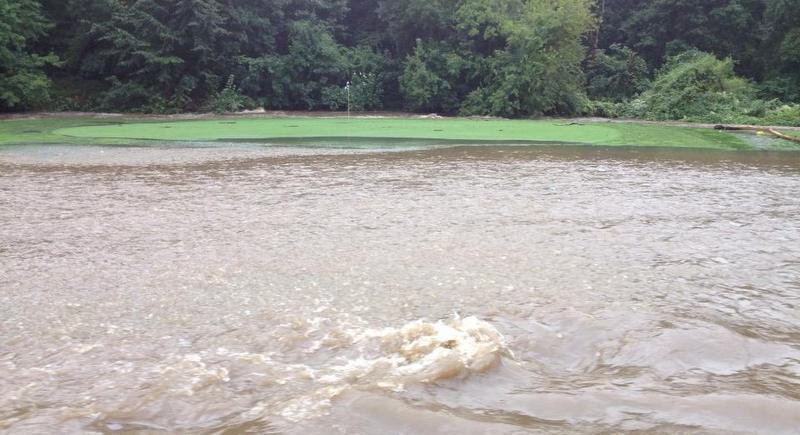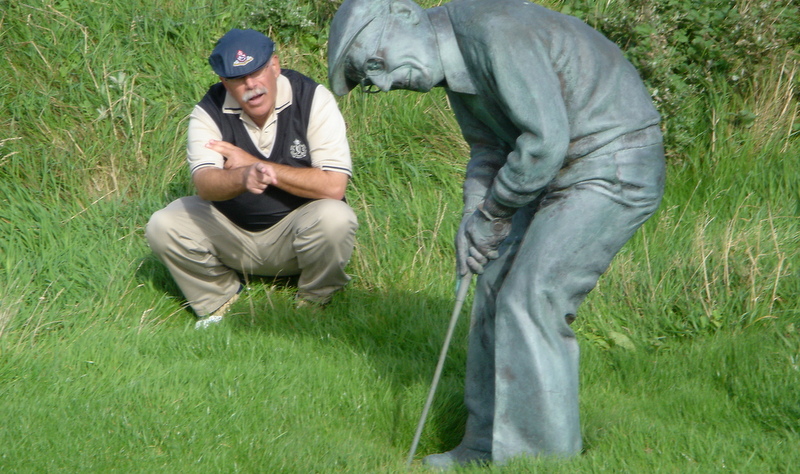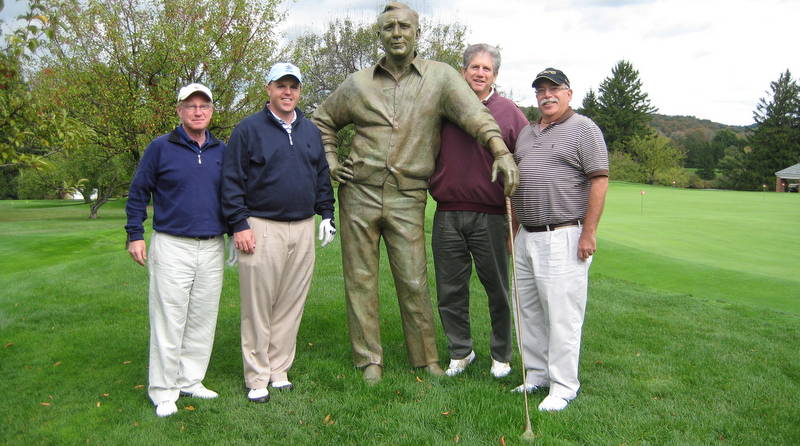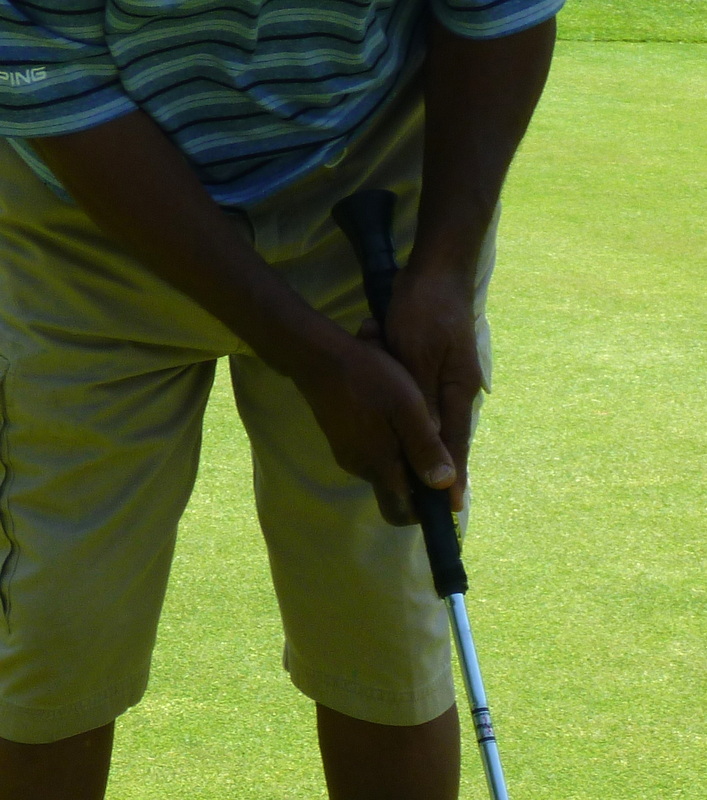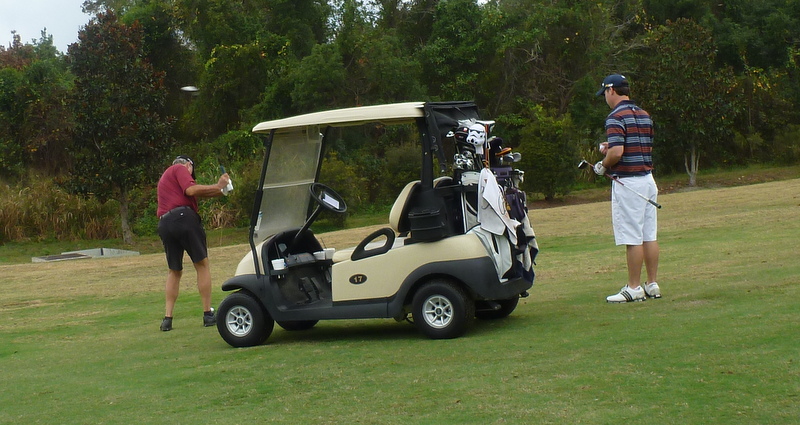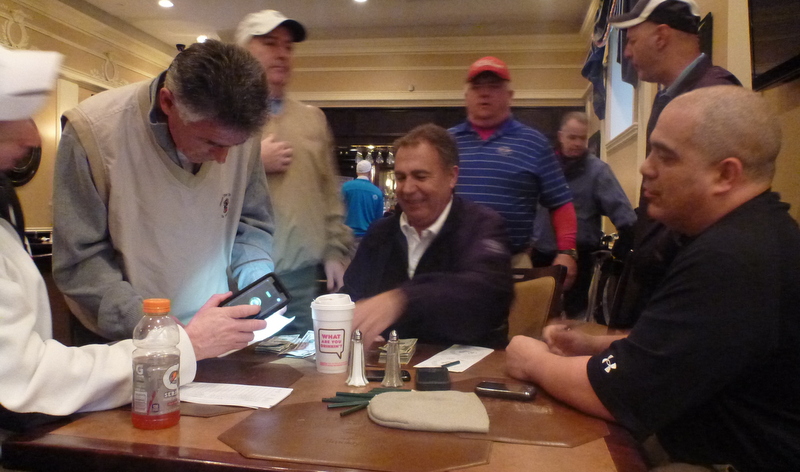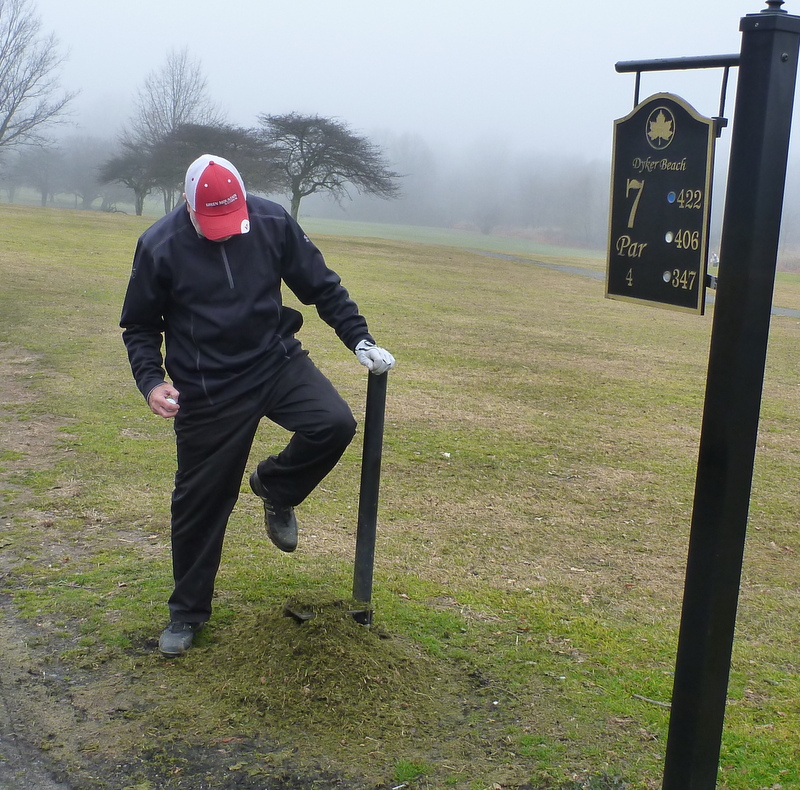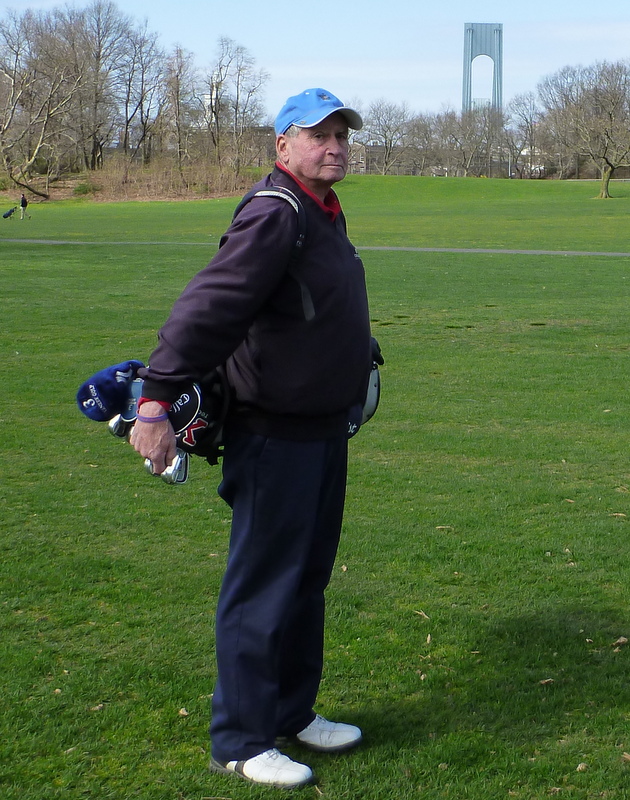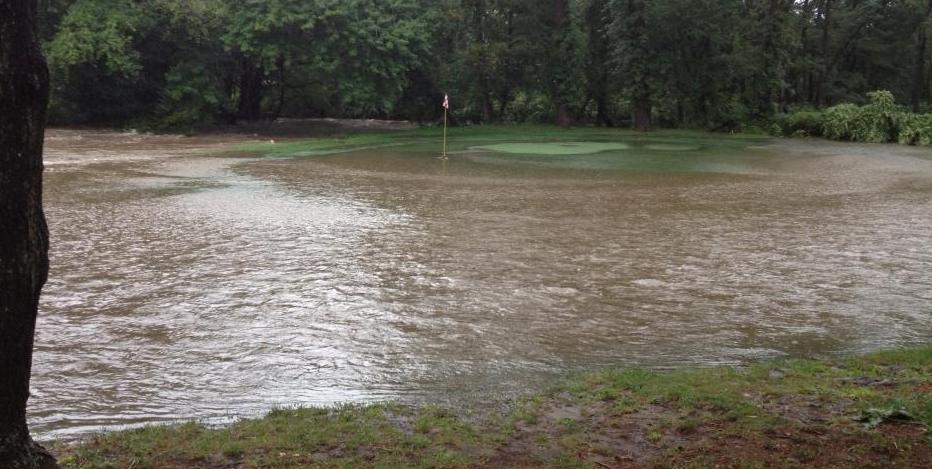 I wrote about Cobbs Creek Golf Club, in western Philadelphia, in the June issue of Golf Digest. The main course—which regulars call the Crick—was named after its most diabolical hazard, which also runs along the eastern edge of Merion Golf Club, a few miles away. The Crick’s creek has always been both an asset and a liability. Hugh Wilson, who also designed Merion, brilliantly incorporated it into his routing, and Charles Barkley once got so angry at it—on the third hole, a short par 4—that he threw his clubs into the water, then stormed back to the golf shop and bought another set. But when the creek floods, as it did on Labor Day, it can carry away entire greens. Most of the photos in this post were sent to me by Paul Cornely, the head of the regular men’s group, which is called the Cobbs Creek Publinks Golf Club. Cornely and I played back in March, when the water was better behaved.
I wrote about Cobbs Creek Golf Club, in western Philadelphia, in the June issue of Golf Digest. The main course—which regulars call the Crick—was named after its most diabolical hazard, which also runs along the eastern edge of Merion Golf Club, a few miles away. The Crick’s creek has always been both an asset and a liability. Hugh Wilson, who also designed Merion, brilliantly incorporated it into his routing, and Charles Barkley once got so angry at it—on the third hole, a short par 4—that he threw his clubs into the water, then stormed back to the golf shop and bought another set. But when the creek floods, as it did on Labor Day, it can carry away entire greens. Most of the photos in this post were sent to me by Paul Cornely, the head of the regular men’s group, which is called the Cobbs Creek Publinks Golf Club. Cornely and I played back in March, when the water was better behaved.
Cornely writes:
The rain started at 10:45, and in an hour the course and nearby area got four-plus inches. We had twenty-five guys, and the last group was on the eighteenth green when the rain started. It was coming down so hard that we had to stay in the clubhouse. These pictures were taken between about 11:45 and 12:15.
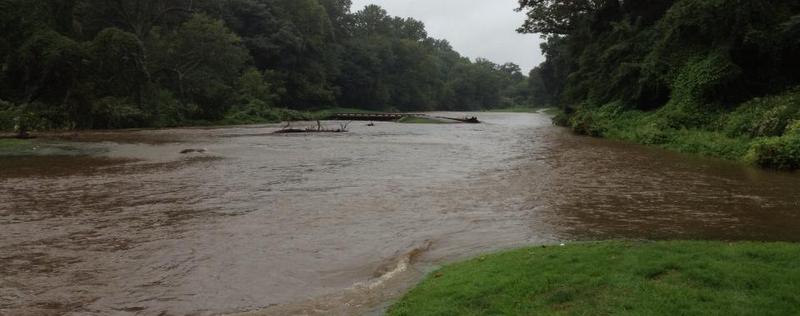
In normal weather, this is a golf hole with a creek running down the center of the fairway, as you can see in the photo below.
Here’s what the hole in the photo above looked like back in March:
The next photo, below, was taken near the clubhouse during the rainstorm. The river you see at the bottom of the hill had been the first fairway until an hour or two before. As bad as things look in these pictures, though, they were worse in 2006, when an August flood swept away the third and fourth greens.
In recent years, a group of Crick aficionados led by Chris Lange,a local businessman, has developed a plan to deal with the flooding problem, which also affects a neighboring facility owned by the city’s transit authority. The group also wants to repair many years’ worth of erosion damage and restore Wilson’s routing, which was modified in 1950, when most of the original thirteenth fairway was appropriated for a missile base. (Today, it’s a driving range.)

Here’s the driving range next door, four months before the flood. During the early years of the Cold War, it was a missile base.
The 1950 reconfiguration, by George Fazio, was cleverly done, since it preserved all eighteen of the Crick’s original greens. But no one believes the current course is as good as the one that Wilson designed, and the architects Gil Hanse and Jim Wagner, whose office is nearby, have created a restoration plan. The Golf Association of Philadelphia has endorsed the project, most of which will be financed privately, and has agreed to move its headquarters to the course if the city approves it. Maybe the Labor Day Flood will move things along.


